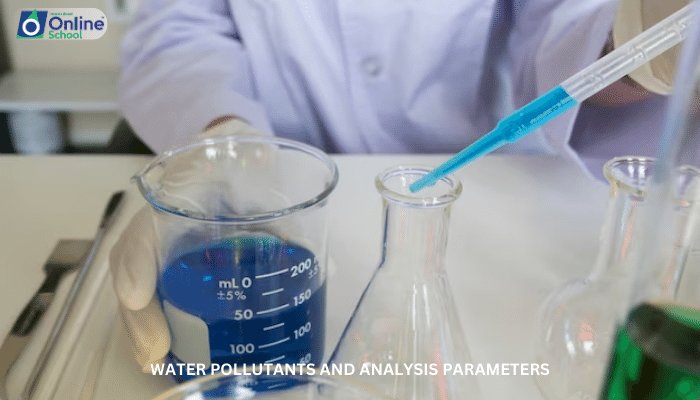
Learning Outcomes
By the end of this lesson, students should be able to:
i. Define water pollution and identify various sources of water pollution, including industrial effluents, agricultural runoff, and domestic wastewater.
ii. Classify water pollutants into different categories based on their origin and characteristics, such as physical, chemical, and biological pollutants.
iii. Recognize and describe the environmental and health impacts of various water pollutants, such as eutrophication, heavy metal contamination, and pathogen contamination.
iv. Explain the significance of water quality monitoring and the role of various parameters in assessing water quality, including pH, dissolved oxygen (DO), biochemical oxygen demand (BOD), and chemical contaminants.
v. Appreciate the importance of maintaining water quality for human health, ecosystem health, and sustainable water resources management.
Introduction
Water, the elixir of life, is essential for all living organisms. However, water pollution poses a significant threat to human health, ecosystems, and the overall environment. This lesson delves into the world of water pollutants and the parameters used to assess water quality, providing insight into the importance of monitoring and maintaining clean water for the well-being of our planet.
i. Water Pollution: A Silent Menace
Water pollution refers to the contamination of water bodies with harmful substances, rendering them unfit for various uses, such as drinking, irrigation, and aquatic life.
Sources of Water Pollution: Industrial effluents, agricultural runoff, domestic wastewater, and urban stormwater are major sources of water pollution.
Types of Water Pollutants: Water pollutants can be categorized based on their origin and characteristics:
Physical Pollutants: These include suspended solids, turbidity, and temperature changes.
Chemical Pollutants: These include heavy metals, pesticides, fertilizers, and organic compounds.
Biological Pollutants: These include bacteria, viruses, and pathogens that can cause waterborne diseases.
ii. Environmental and Health Impacts: A Cause for Concern
Water pollution has far-reaching consequences for human health and the environment:
Eutrophication: Excess nutrients from agricultural runoff and sewage can lead to eutrophication, an algal bloom that depletes oxygen levels in water bodies and harms aquatic life.
Heavy Metal Contamination: Heavy metals, such as lead, mercury, and cadmium, can accumulate in water and organisms, leading to neurological disorders, kidney damage, and other health problems.
Pathogen Contamination: Pathogens from untreated sewage and animal waste can contaminate water sources, causing waterborne diseases, such as diarrhea, cholera, and typhoid.
iii. Water Quality Monitoring: Unveiling the Hidden Threat
Water quality monitoring is essential for assessing the health of water bodies and ensuring safe drinking water:
Key Parameters: Various parameters are used to assess water quality:
pH: pH indicates the acidity or alkalinity of water.
Dissolved Oxygen (DO): DO is crucial for aquatic life and indicates the ability of water to support aquatic organisms.
Biochemical Oxygen Demand (BOD): BOD measures the amount of oxygen consumed by microorganisms as they break down organic matter in water.
Chemical Contaminants: The presence of specific chemical contaminants, such as heavy metals, pesticides, and organic compounds, is also monitored.
iv. Maintaining Water Quality: A Collective Responsibility
Ensuring clean water for all requires a multi-pronged approach:
Pollution Prevention: Reducing pollution at its source is crucial, such as treating industrial effluents, managing agricultural practices, and improving wastewater treatment.
Water Conservation: Conserving water reduces the amount of wastewater generated and the potential for pollution.
Public Awareness: Raising public awareness about water pollution and promoting water conservation practices are essential.
Water pollution is a global challenge with far-reaching consequences. Understanding the types of water pollutants, their impacts, and the importance of water quality monitoring is crucial for safeguarding this precious resource. By adopting sustainable practices, reducing pollution, and promoting water conservation, we can work towards a future where clean water is accessible to all.